
You may take that ironically or unironically. I live in Maine, after all. Here, the true terror begins when the snow flies.
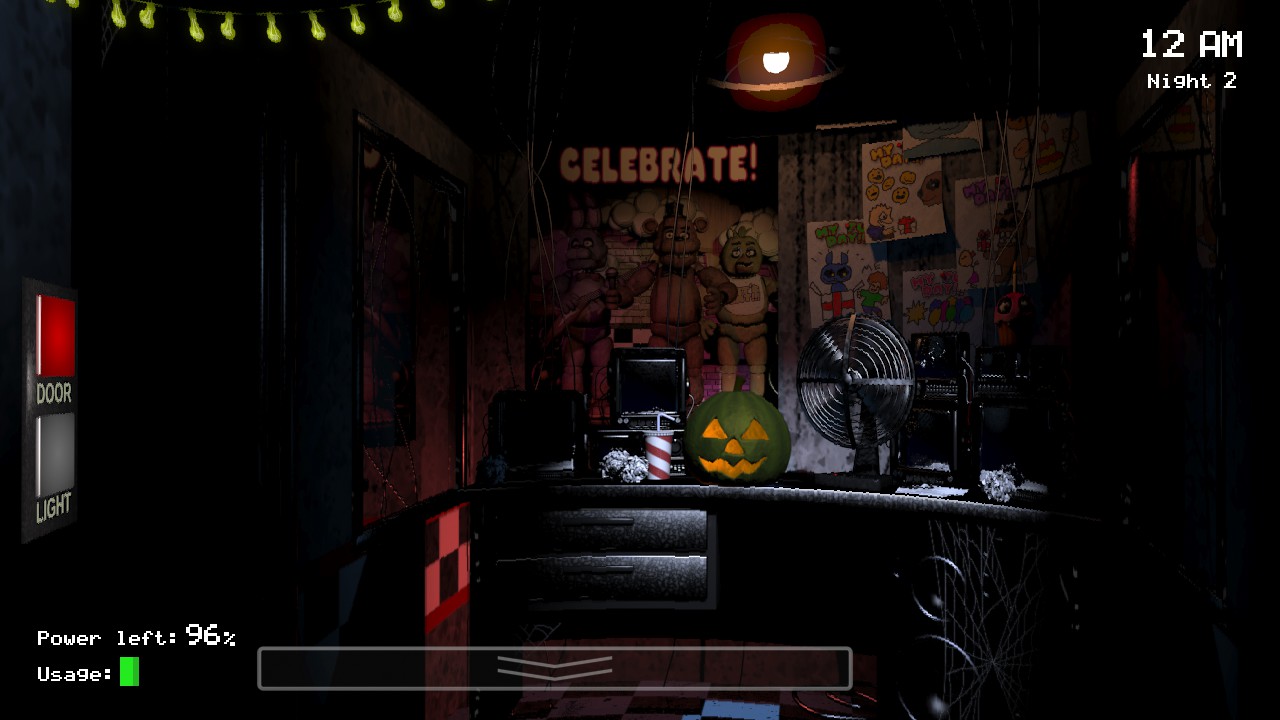
Five Nights at Freddy's
I've finished 3 and 6 in this series after a fashion (3 by getting the incomplete bad ending, 6 by building a perfectly safe and fun pizzeria that operated utterly without incident!), but I've never actually played the original despite owning it for years. 2014 is hardly an ancient vintage, but at modern resolutions, the technical seams show a bit. There's not quite as much life imparted to the main tableau through motion and lighting as we would expect nowadays, and the font is notably jaggy. The ubiquity of the thing has also ruined most of its surprises: I imagine stuff like the trick to Foxy and the wrench it throws into your normal rounds would've been really satisfying to figure out in the day, but given how thoroughly popular knowledge has dissected FNaF, the game loop is quickly reduced to mindless chores (check Foxy's and Freddy's cameras, then the two doors; repeat ad nauseum). That said: I did not know that Freddy operated in a manner similar to Foxy; I thought he appeared only when you exhausted your power. I wish I could say I figured out how to deal with him on my own, but no; I checked an FAQ to ascertain his mechanics, as the game was wearing thin for me`at that point (Day 4) with its other secrets divulged.
I'm sounding negative here, but it's important to note that while my play experience was compromised by popular knowledge, the game gets so much stuff right about horror that's so often botched: the simple controls, which avoid distraction from onscreen events and facilitate and encourage reactions borne of primal fear; the utter lack of direction or signaling of scares; the use in a still, deserted after-hours environment of the slightest of stimuli - the sounds of shuffling feet on the carpet; staticky interruptions in video feed - to foster dread. Scott Cauthon knew how to work his limitations to his advantage. Also: while the series eventually drowned itself in depressing lore, I think one of video games' greatest jokes is the first title's complete, and wholly conscious, lack of explanation for the malevolence of those animatronics. Of course they roam the pizzeria hallways at night in search of blood. Look at them. Who wouldn't think that?

D
Hey, it's time to self-plagiarize from a Steam review again:
D was everywhere in its day, the dawn of the 3D era, and many of the reviewers at Steam (where I originally posted this review) are zeroed in on its historical import. I think two aspects are of particular note regarding its success. One, though the 3D graphics are limited (but quite good for the time), the game really illustrates how far knowledge of the language of film - editing, timing, shot composition - can go in making even a primitive 3D environment effective. D feels leaps and bounds over its contemporaries even though it's not really that much more advanced technologically. Two, though visionary director Kenji Eno's prediction of "digital actors" appearing in different roles from game to game didn't come true, his focus on his main character and her range of expression adds life where none exists in lesser titles. Eno gives the proceedings time to breathe, allows for reactions of astonishment and befuddlement and frustration and reflection from the heroine, and events seem more natural, relatable, and human for it. They go a long way in helping to tell a story largely without words.
The game does still work, I think, provided you give some latitude for the two-hour time limit and don't mind investing in a scouting-out playthrough if you're coming in cold. There's genuine tension and atmosphere, and the end of the bug flashbacks is a heck of a reveal.
If you prefer the view from the backseat, supergreatfriend's LP, which provided my first experience with the game, provides an excellent tour. (He also revisits it in a later stream with additional commentary - and pro strats!) One of my most potent memories of SGF's main runthrough came from a poster on the thread who related how he came together with his college roommates to play the game, the group entranced as they traded theories as they got a little closer to the truth each evening. They seem to have been exceptionally slow at unraveling its mysteries, but it is a testament to the game's ability, particularly in its day, to cast a spell.

Layers of Fear 2
This entire review is going to sound like I'm out of my mind, but you're going to have to trust me. You know the thing when you're in a tight space and you're trying to open a door that opens toward you, and you kind of have to squeeze yourself around the door, moving it inward as you finagle yourself around its edge, to get by? This game - this nominal horror game - is centered around replicating that experience. I'm not kidding. They made doors extremely finicky and awkward to open and get around in their engine, and then they based gameplay around negotiating them. This sounds like utter lunacy, and yet I'm not wrong, because the puzzles explicitly hinge (ha, ha) on the door parts being difficult to negotiate. They don't make sense otherwise. Like, there are several sequences where you're chased by mannequin enemies, and the only way to put enough distance between you and them is to close doors behind you, and if opening & closing doors were a straightforward process, that would be a snap, and there would be no challenge and no actual chase. But no. In fact, the vast majority of player interaction during the first half of the game consists of opening and closing an absolutely ludicrous number of doors, as if the ocean liner on which the game takes place was sponsored by Andersen.
Look: I got this game because it supposedly starred National Fucking Treasure Tony Todd, and because I found the premise intriguing - like the (unplayed-by-me) first game, it centers on the struggles of an artist, but instead of a painter, you're an actor with...actor's block, I suppose, invited aboard a cruise ship by reclusive mad director Candyman to film a life-defining role. Well, Tony Todd is barely in the dang thing; his few lines are ominous vacuities wholly unworthy of his voice; and the character's backstory consists of an extraordinarily protracted Pore Victorian Orphans routine that is really kind of ridiculous. The story is guided by four choices you make at signposted intervals, yet the game's questionable interpretation of your actions ensures your path won't reflect your character; the game outright wouldn't let make the choice I wanted at one point, and at another, it decided that I had given up and submitted to the director's instructions by, er, not doing what he wanted and going in a completely opposite direction. Then I learned that game didn't like my series of non-choices and was going to hand me a non-ending (it's one of those "moral choice" systems where your decisions have to be all one way or the other or the game throws a fit), so I made the ULTIMATE "follow my own direction" decision and opted to quit this troubled production due to creative differences.
By far the worst aspect of the game, though, is the pacing. The game takes F-O-R-E-V-E-R to spell out an extraordinarily short plot; moving through the environments is like maneuvering a submarine through frozen butter; and the gameplay is almost nonexistent (again: most of the first half of the game consists of opening and closing dozens of doors). I don't think I've ever played a game this lugubrious. Making progress was like pulling teeth. This is bad news, because the devs behind this game were also handed the keys to the Silent Hill franchise, such as it is, and between this and The Medium (which I watched via supergreatfriend's playthrough), it's apparent they have no idea how to make a narrative compelling. And it's a pity, because the devs do understand certain elements of making a Silent Hill game. The underlying plot - not the stupid, interminable Victorian orphan part; the part about the underlying nature of the main character and how the truth is hinted throughout the game - is great! The symbolism of the mannequin enemies is great! There's a bit with switching between realities, each tinted by the character's feelings toward a different family member, that's great! The game looks great! I mean, look at this thing:
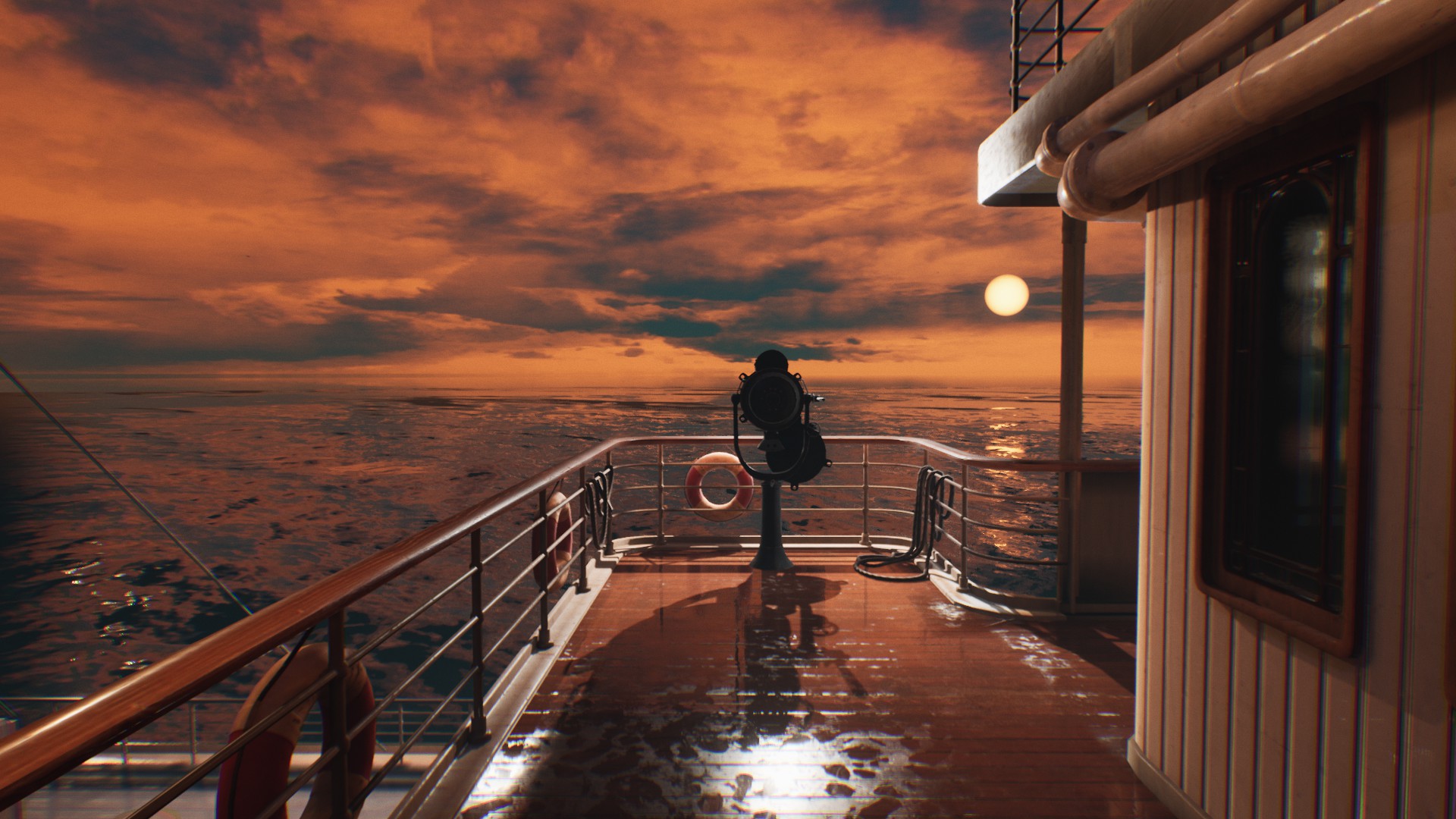
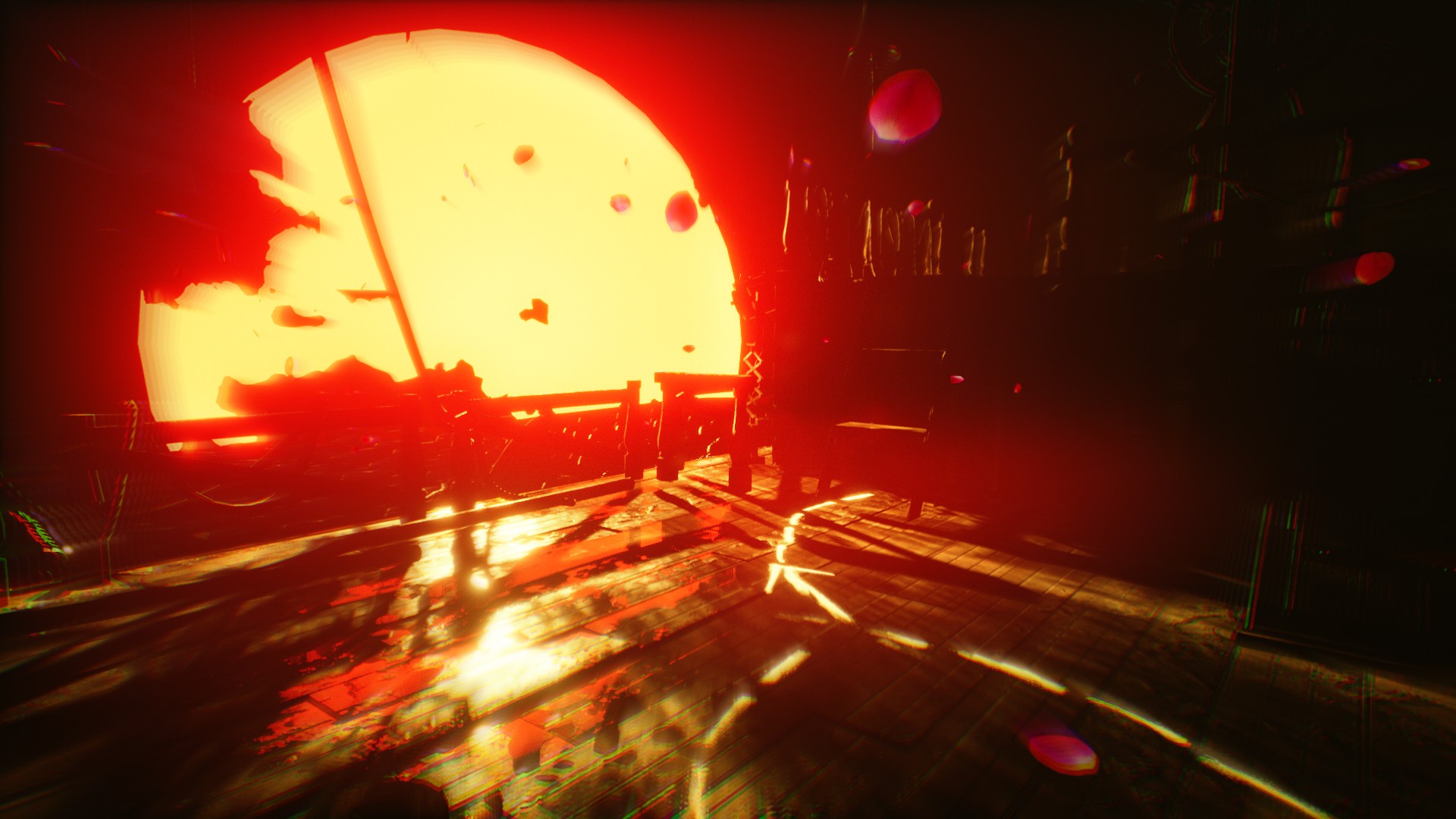
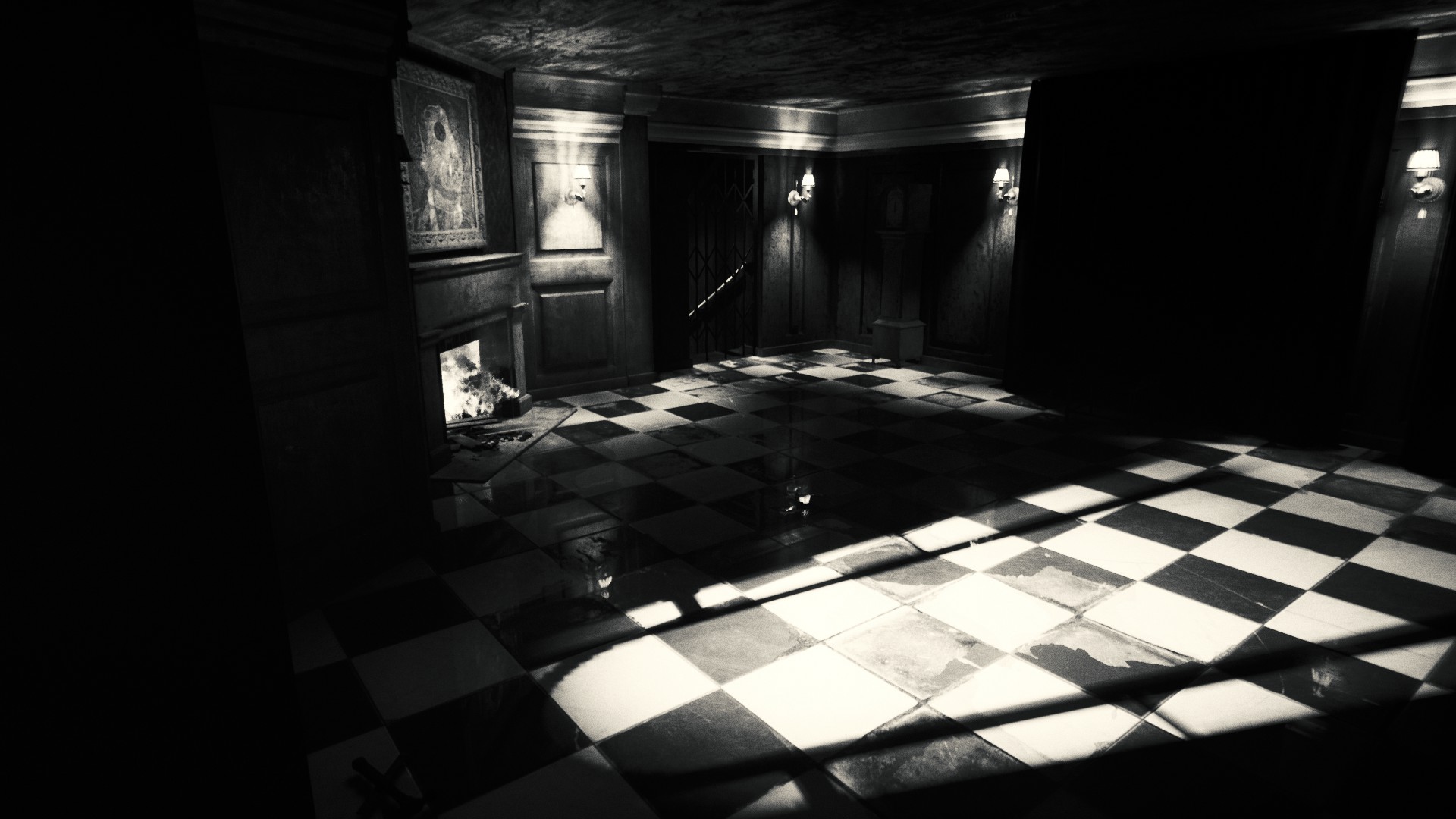
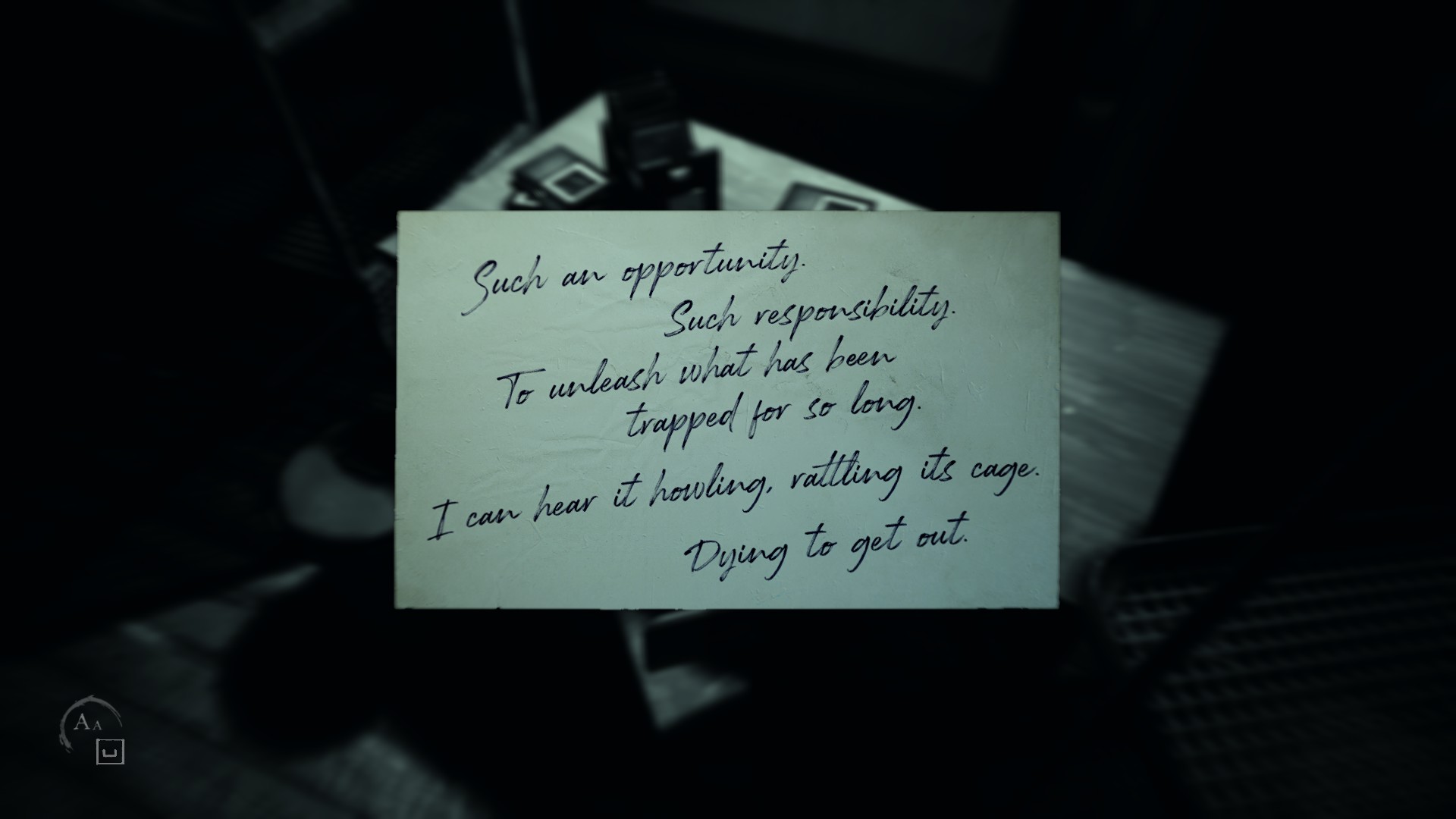
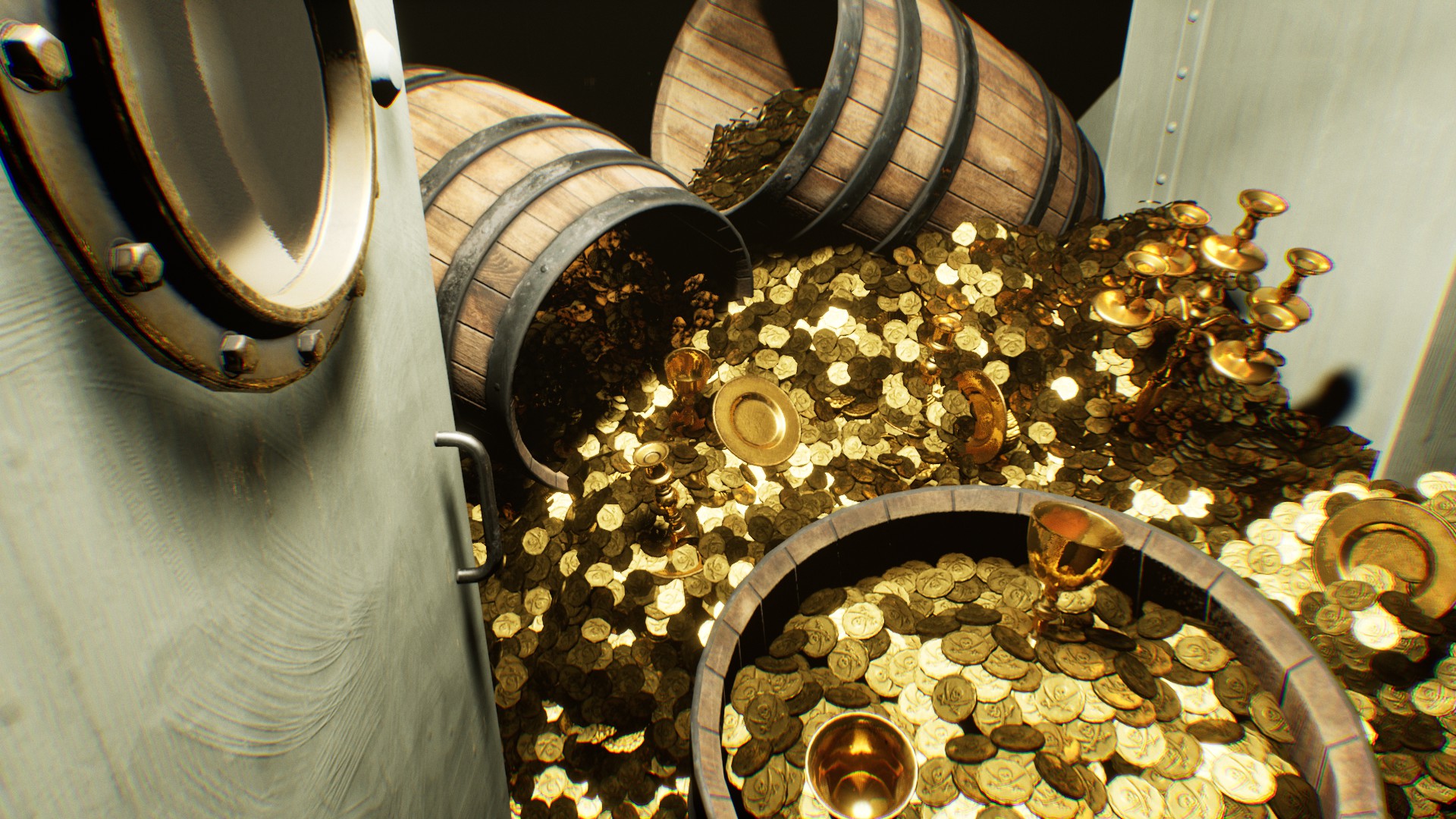
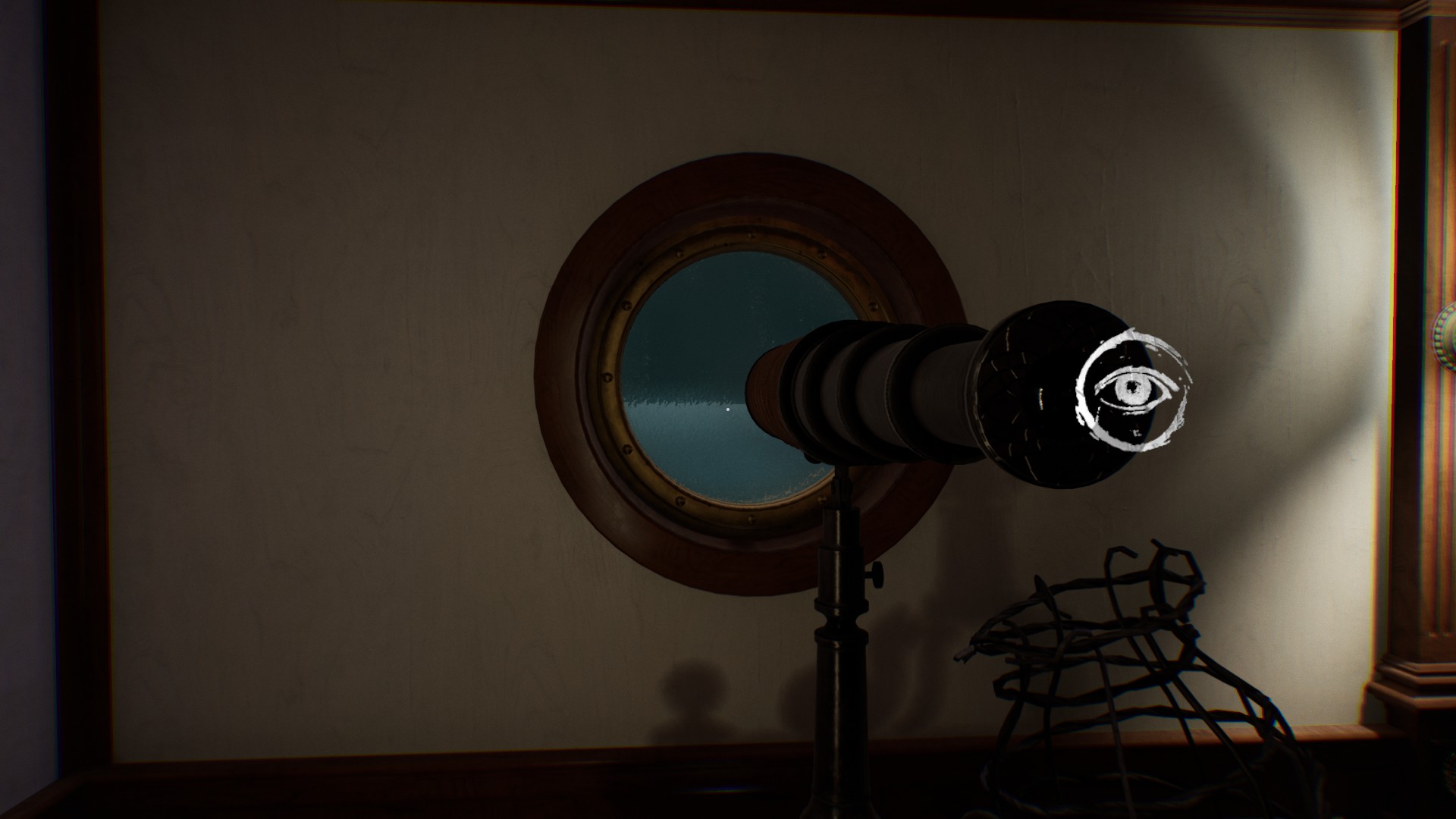
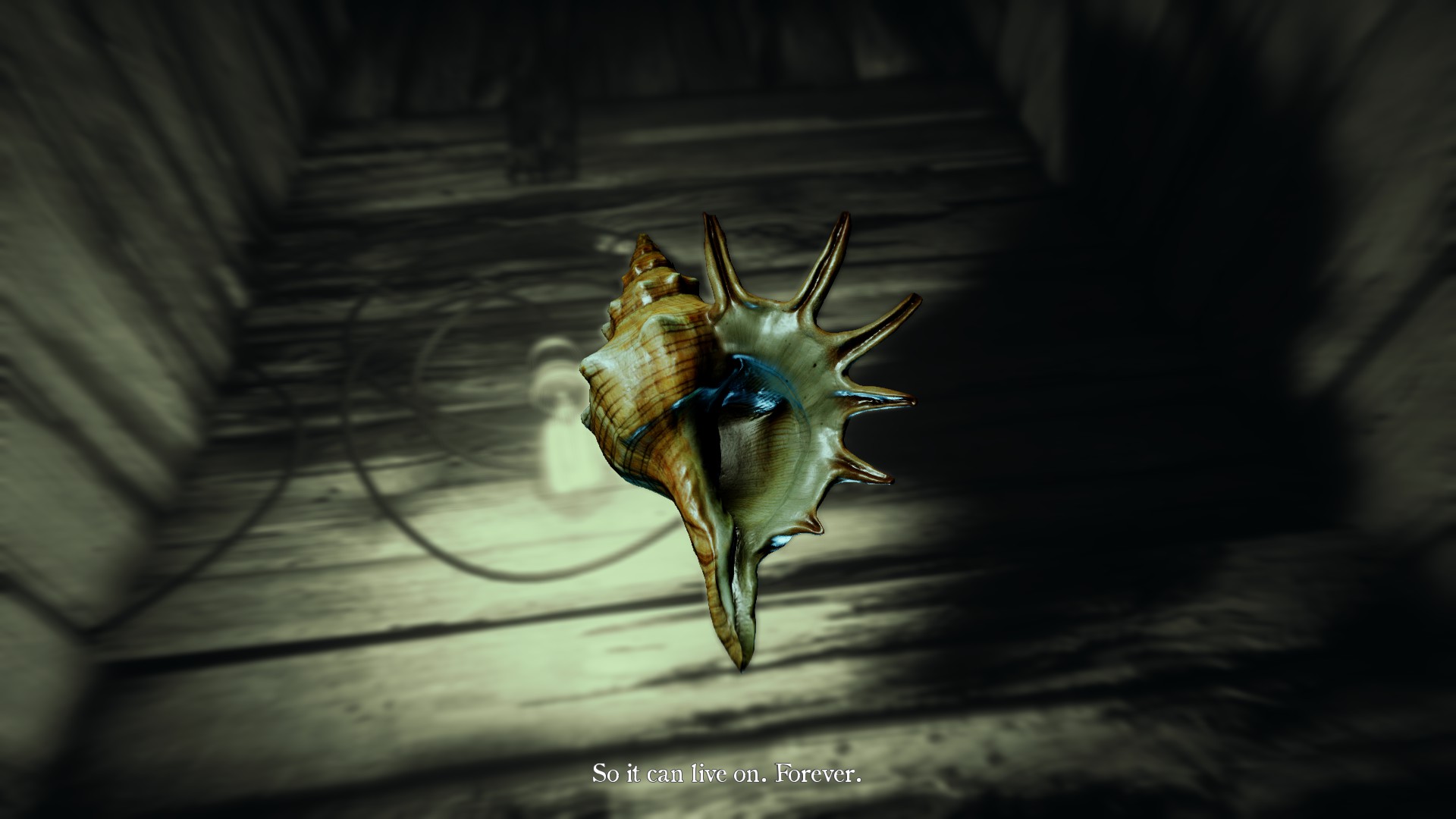
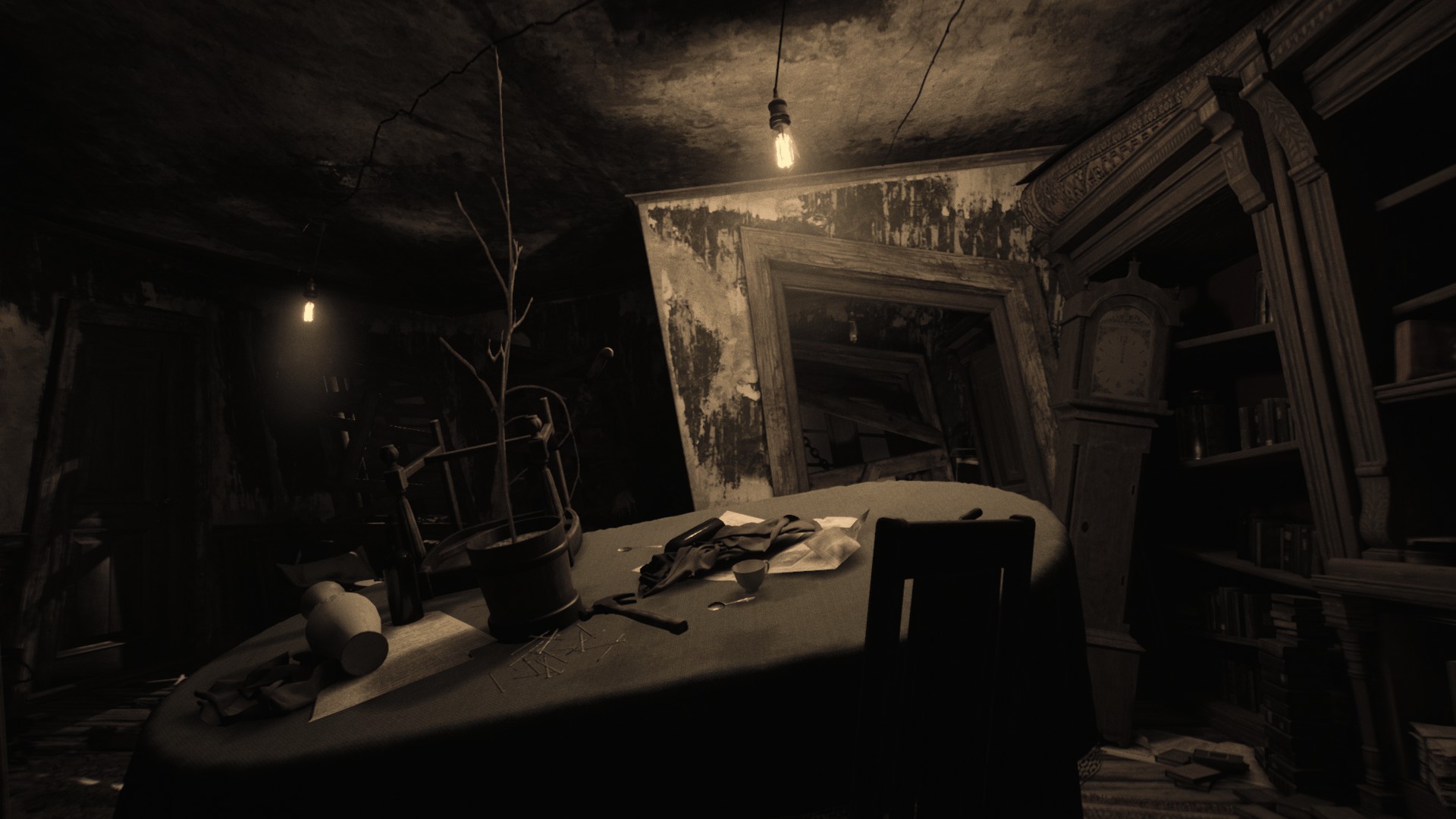
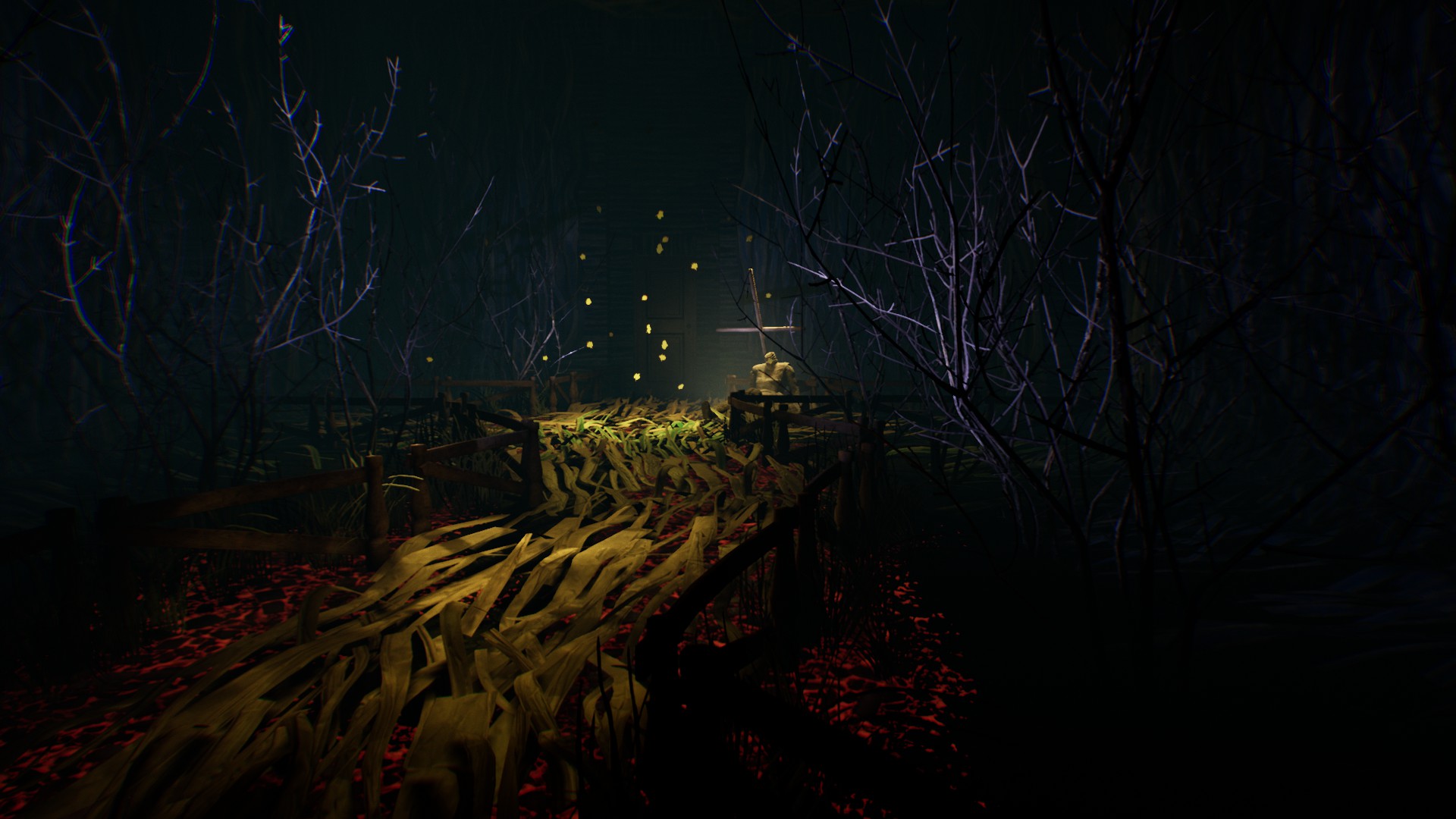
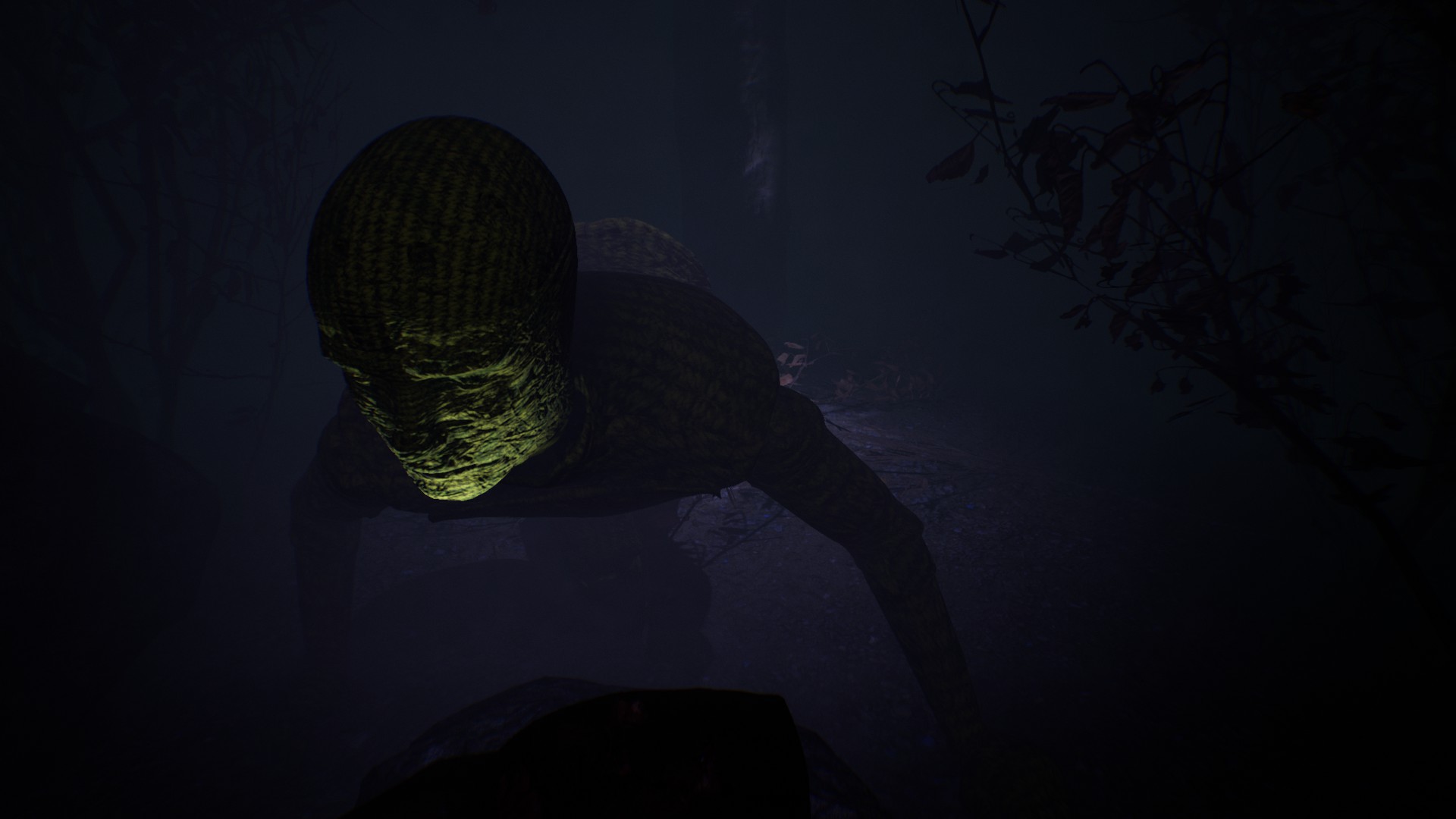
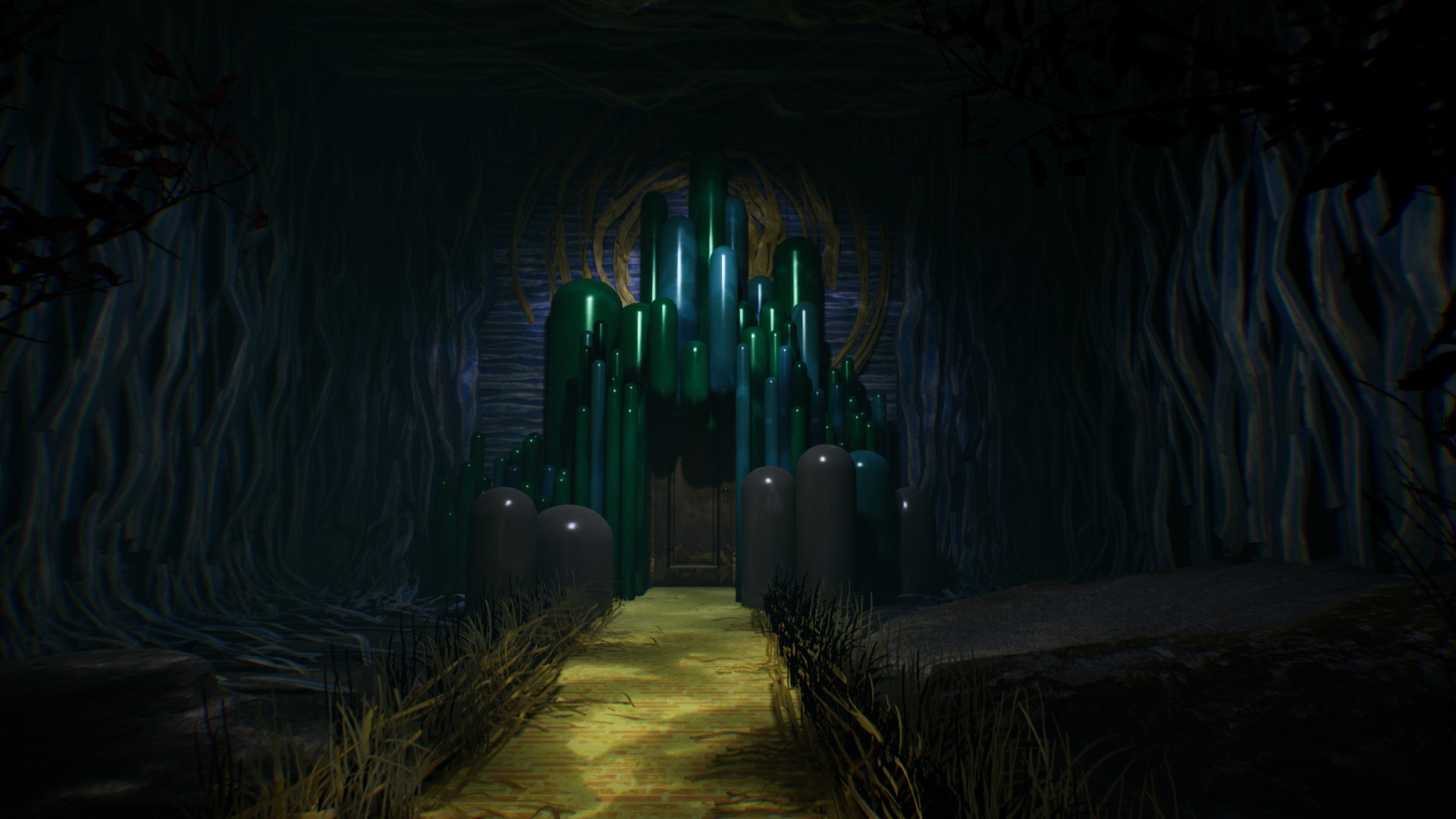

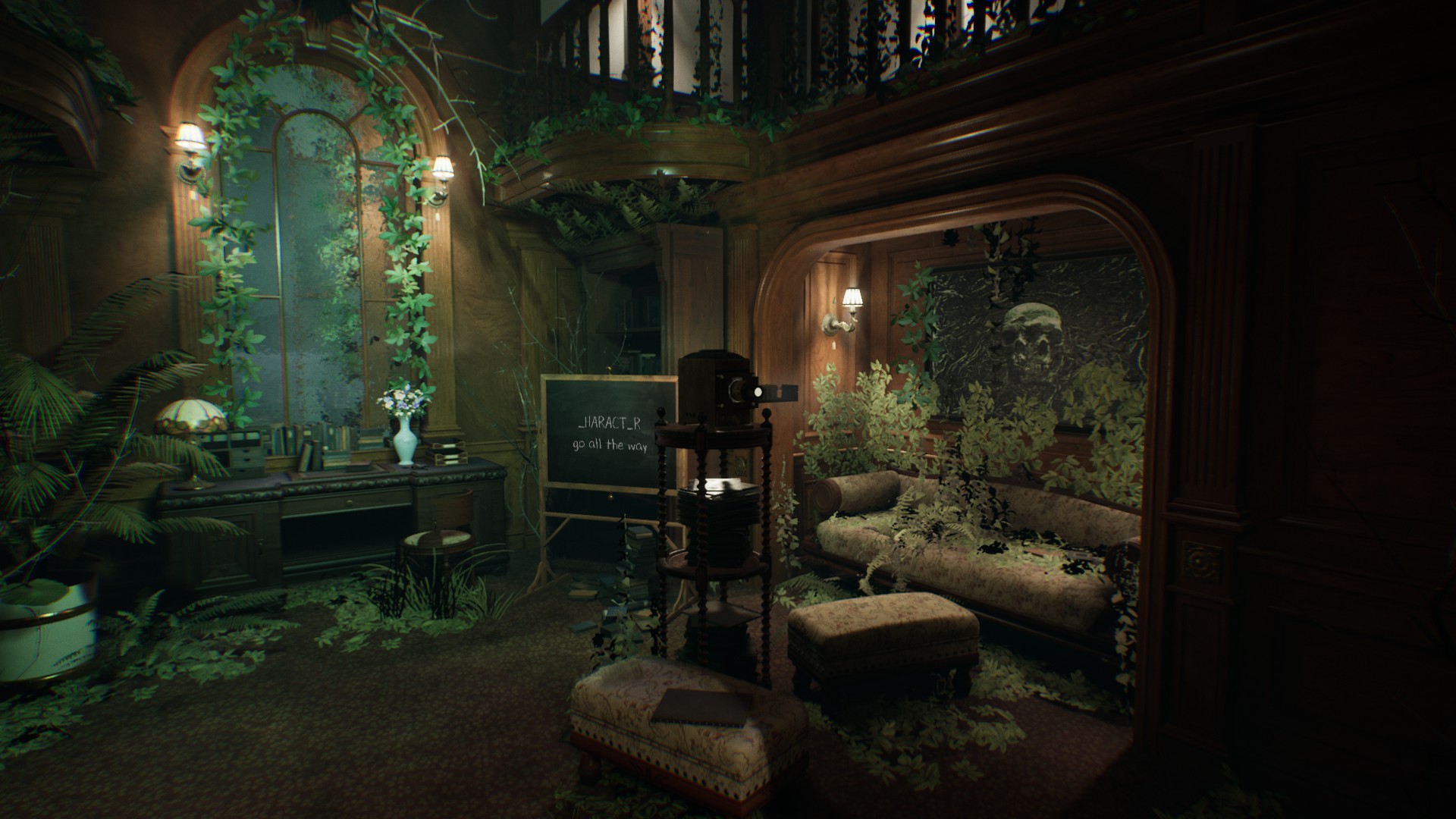

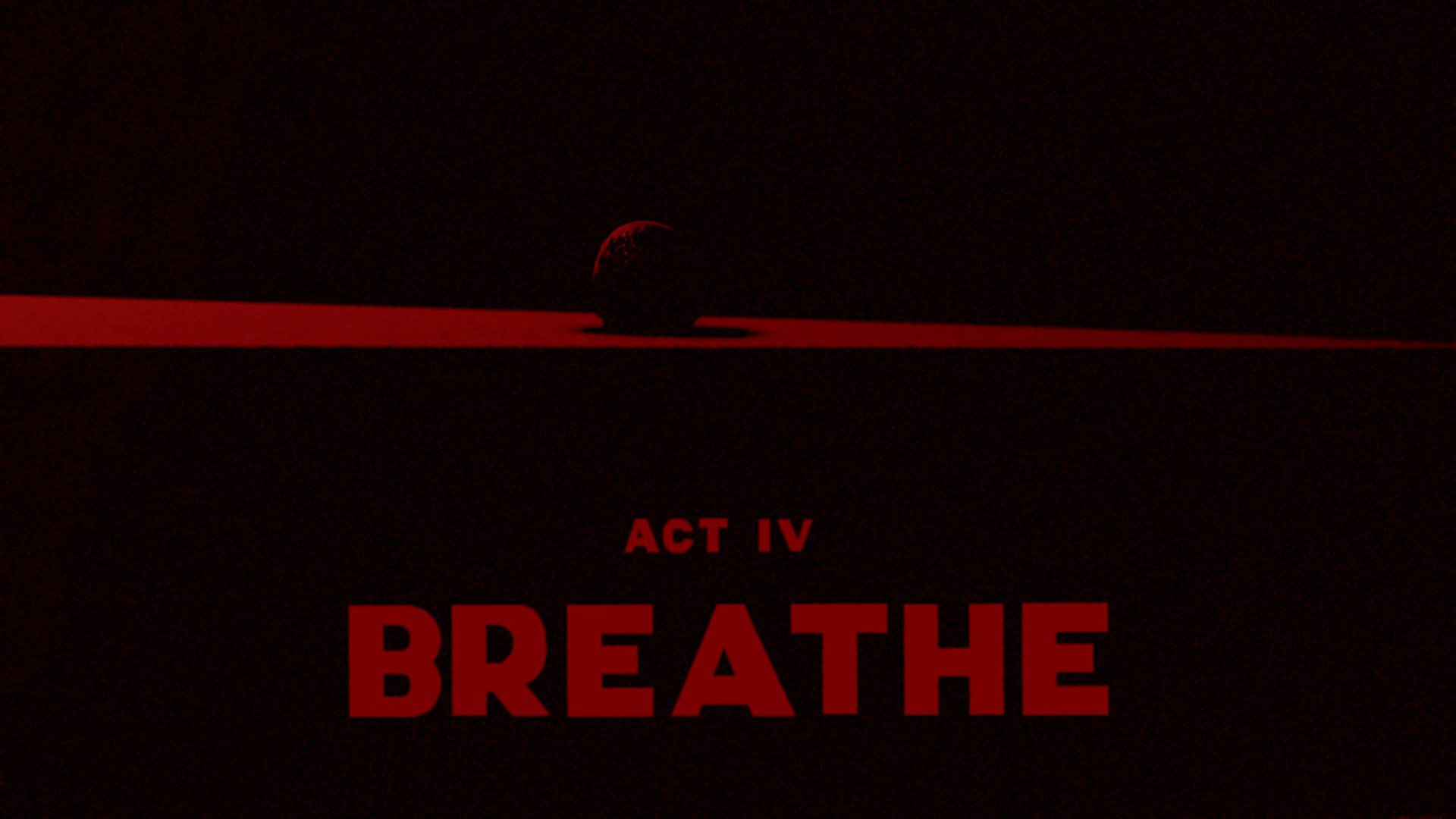
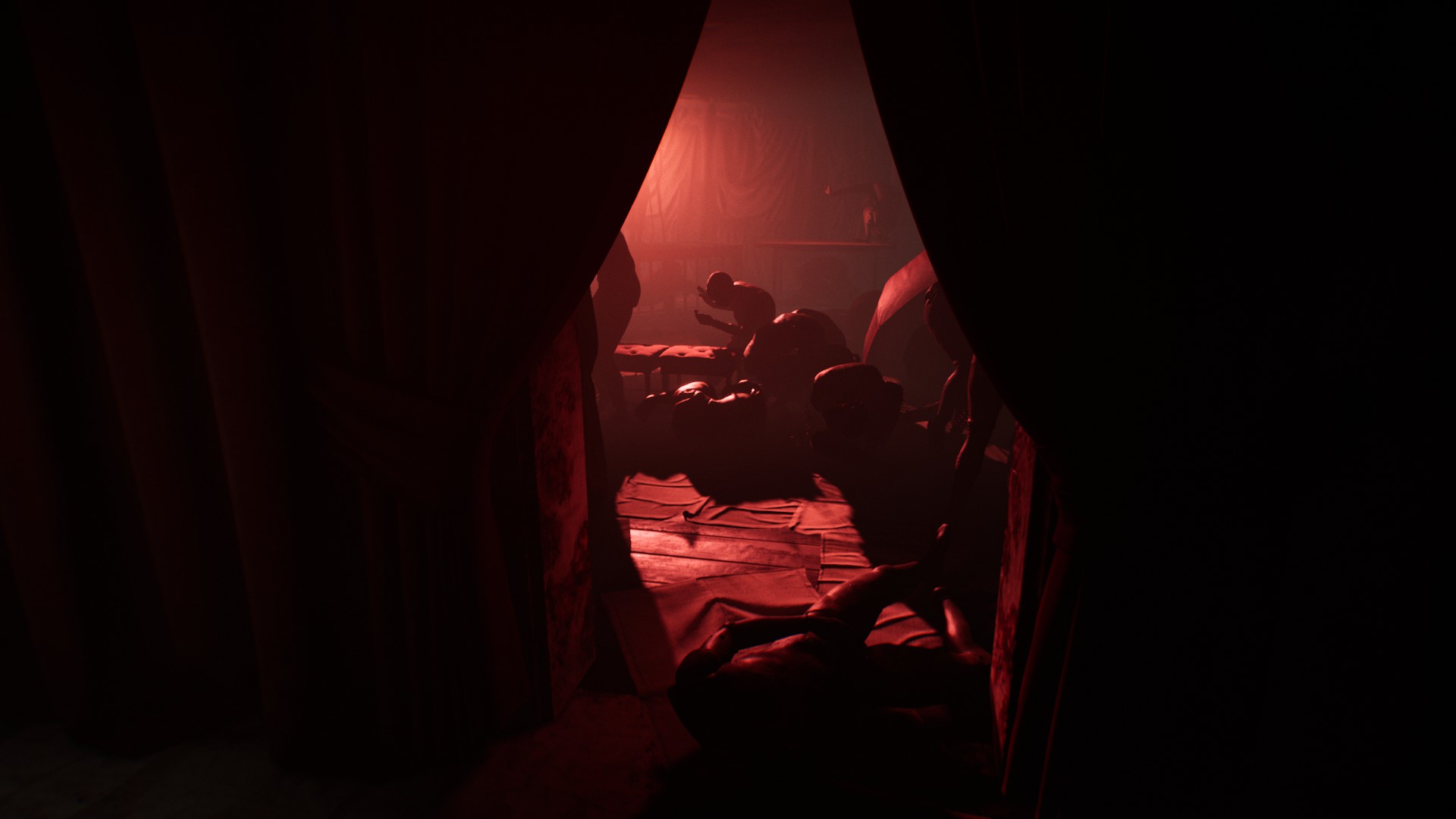
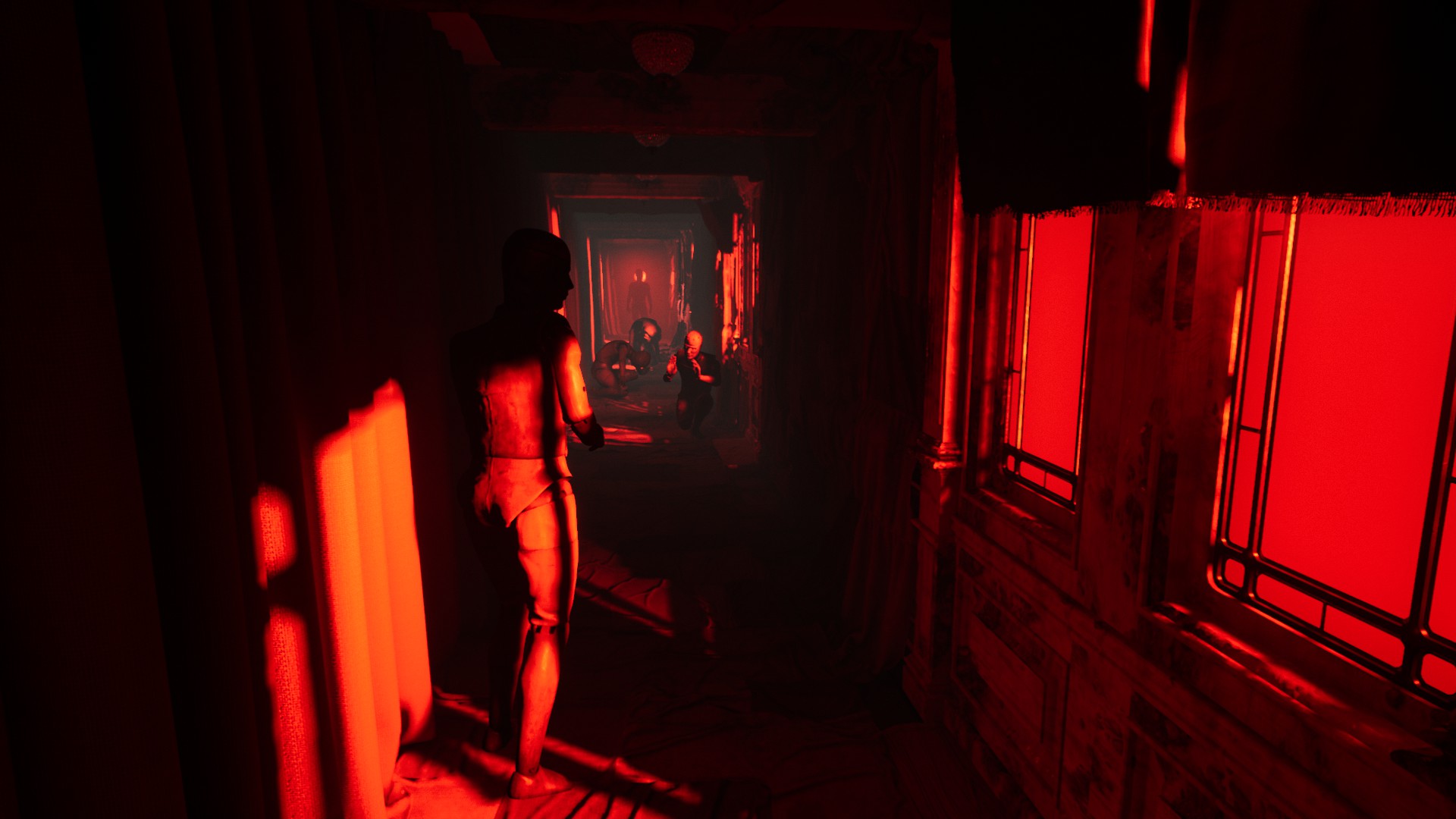
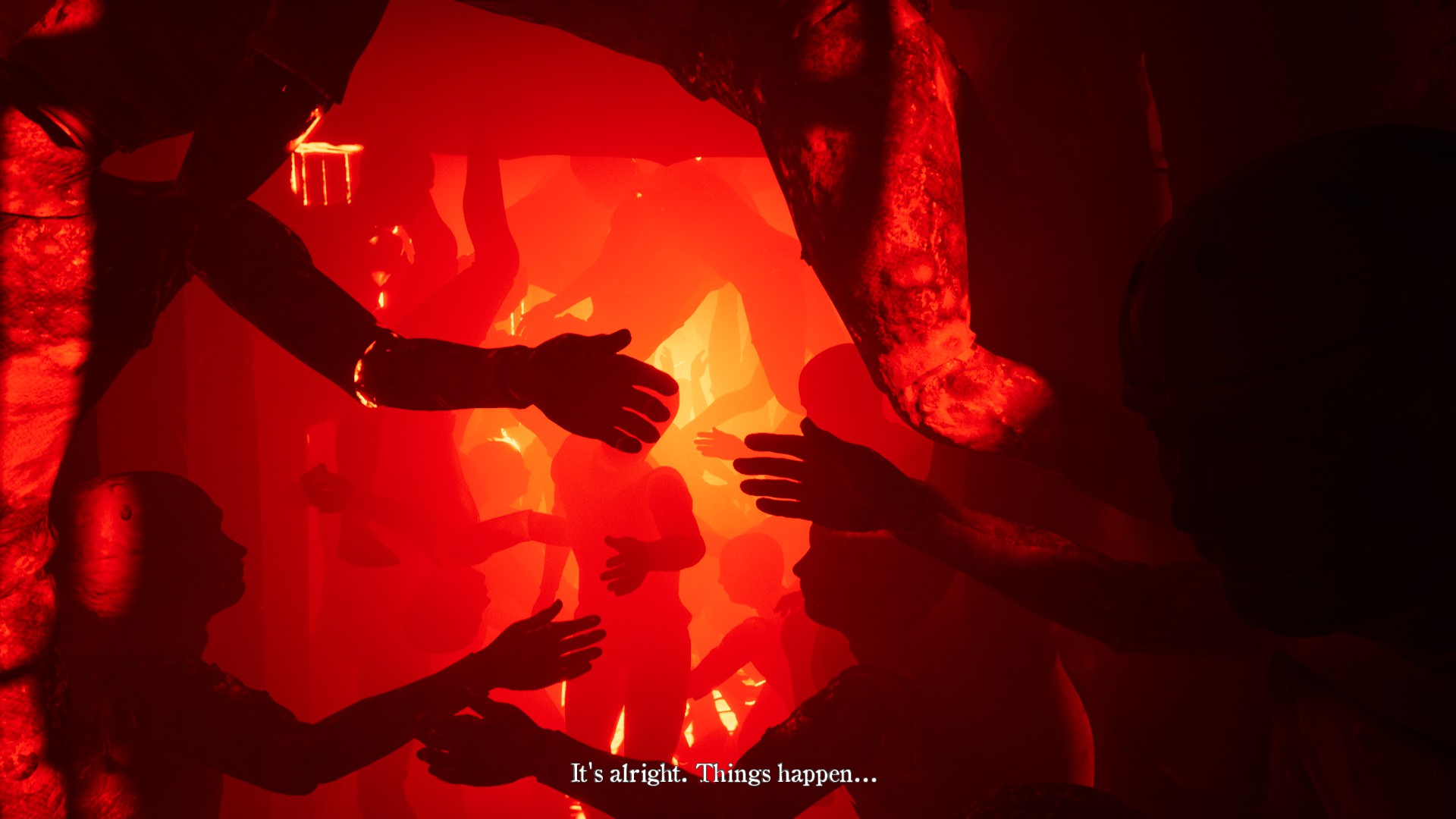
It would have been clever if the presentation and gameplay were at all functional! But they're not, and the game's not.
Let's end this on a Lunar reference. Maybe? The palette seems significant:
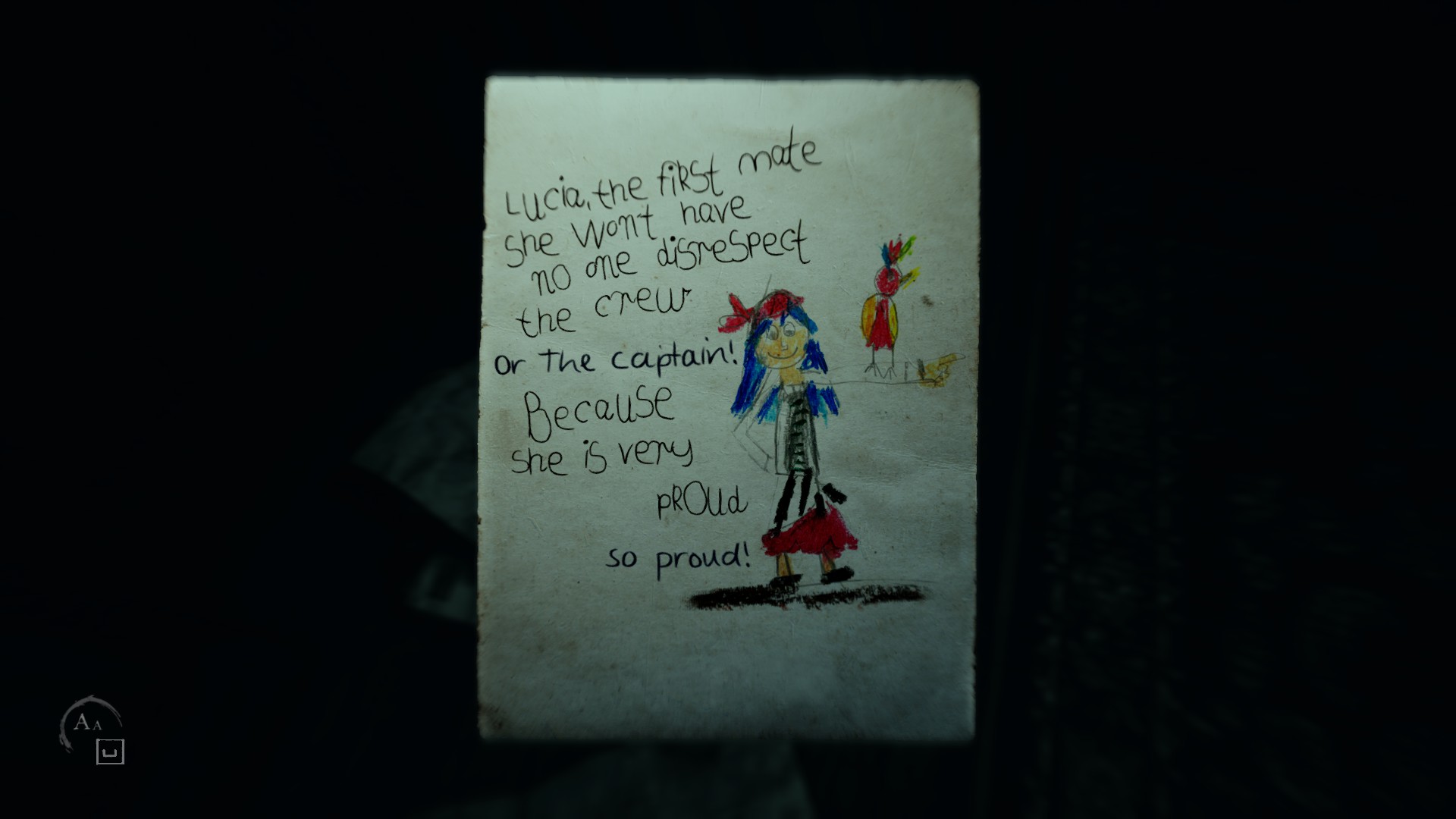
It's too Annie Lennox.
Following the ActRaiser kinda-remake, Yuzo Koshiro is trying to stir up hype for a similar port of Terranigma:
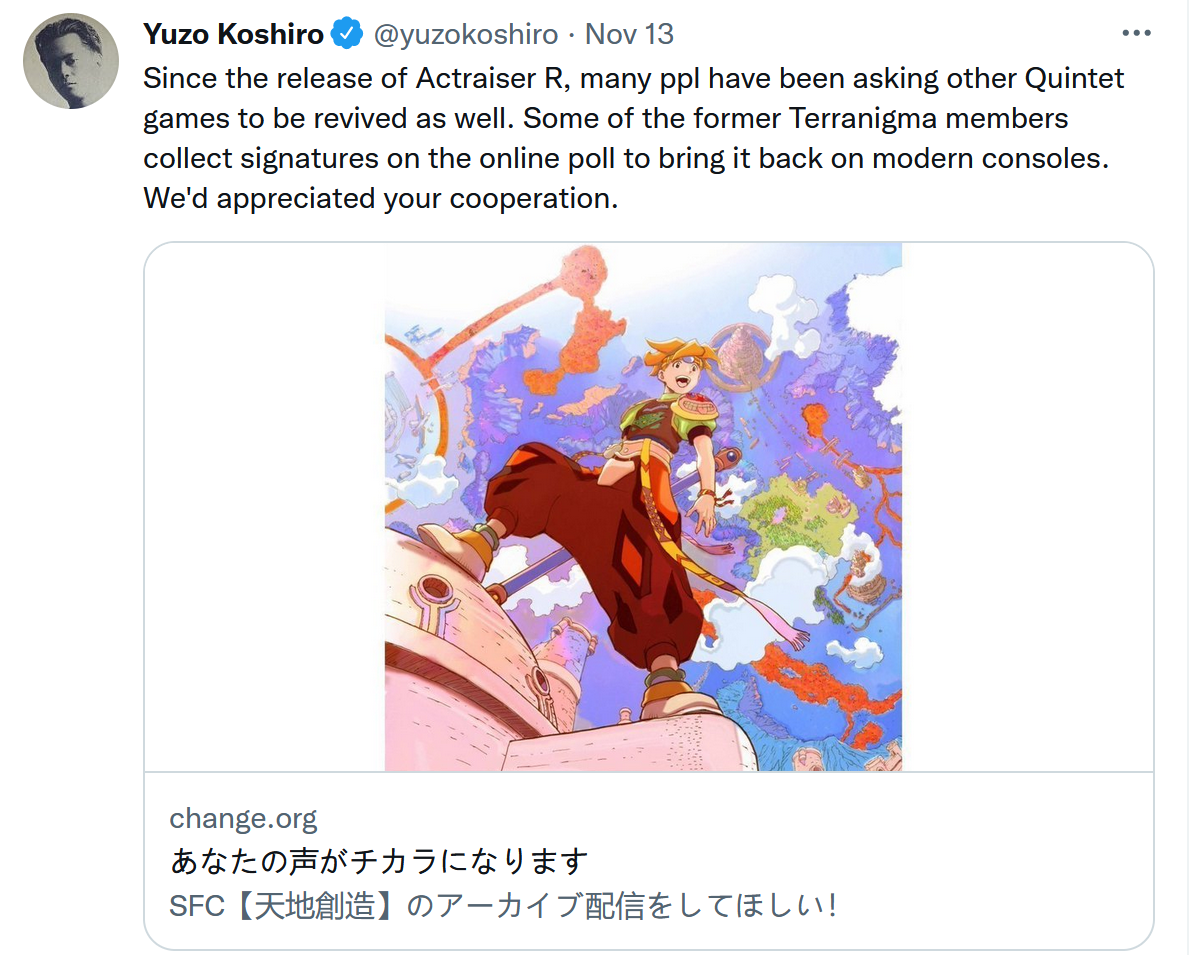
Though it's been mercifully on hiatus for the past several years, I strongly dislike the "sign this petition if you want your favorite game to come out!" promotion tactic as employed by those on the production side, even if they're a global treasure like Yuzo Koshiro. Corporate decisions are not based on fan petitions; corporations are beholden to boring things like shareholders and balance sheets and keeping people employed and can undertake projects only if they make financial sense. Pretending otherwise is just manipulating fans' emotions to get free publicity for an already-upcoming release.
I have little confidence that the Square-Enix of today could handle the ending of Terranigma. I have my own reservations about it, but it's bold and profound, dealing with the biggest of issues in an unmitigated manner, and I can't see the company respecting it - being wise enough, and resistant enough to its fascination with mobile-quality bells and whistles and bloviating for its own sake, to get out of its way. Nothing approaching the concluding sequence could come out of the studio today.
That said, the ActRaiser remake was a success in that it wasn't a complete trainwreck; its reception was mixed, and outside of the lowered bars of mobile review sites, I didn't see anyone proclaiming it as a masterpiece or worthy successor to the original by any means, but it apparently wasn't a complete a mobile-asset hack job, at least. Not completely.
Which brings me to a question - initially borne out of a mistake on my part. I thought for a bit that the studio behind Mystic Ark had created Terranigma, but that was just a failure of memory on my part - Terranigma, and Soul Blazer, were from Quintet, and I had them confused with Produce, the Mystic Ark people. But: Terranigma, like the first Mystic Ark, was a 16-bit non-Dragon Quest Enix RPG that missed a U.S. release, and Square Enix seems to have learned as of late that there's money in its back catalog, even in the long-neglected Enix half of it - including the titles that never got a U.S. release. Would I want the Mystic Ark series - the SNES game and its PlayStation sequel Theatre of Illusions, from which this site takes its name - to get a release like this?
I should properly start this with "would I want The 7th Saga to get a release like this?", as Mystic Ark started as a spiritual successor to that game - but the answer there is clear: no. That title gets a lot from its austere visual and storytelling style, which really fosters the sense of a solitary journey against overwhelming odds. More banter between the Apprentices could be fun to see (there are numerous interactions that were either cut out of the original game or are rarely seen due to stacked RNG/obscure triggers), but the game overall would not benefit from friendlier, more approachable graphics or overly-chatty characters. (It also goes without saying that the U.S. version's renowned difficulty would be nerfed into the pavement.)
The first Mystic Ark also benefits significantly from silence and austerity, namely in its silent, evocative Myst-like hub world and its mysteries, as well as its sixth world, which is doing survival horror before that genre existed in full (still spoilering that; the surprise doesn't deserve to be ruined for those unaware). Its ending, where (more spoiler text) it's suggested that the main character is in fact a past incarnation of the player and that everyone has gone through their own unacknowledged struggles just to come into this world (with parental affections and significance to our existences present even in their apparent absence in our everyday lives), would also likely be ruined in a remake by dumbly well-intentioned over-explaining. As for Theatre of Illusions, I haven't gotten past the end of the second world (of presumably seven) due to an emulation issue, but as the copious production materials in the artbook make clear, in both visuals and concepts, the game was very much the baby of artist Akihiro Yamada, and that unique creative perspective would suffer in a trip to Shiny Plastic Mobiletown.
I seem very negative here, and in hashing out my feelings on this and the potential screw-ups, I suppose I am. I can't deny that I would like to see the games brought to a larger audience, though, and I would like to see what someone could do with new Mystic Ark content 20, 25 years on, even if the results are likely to be monkey's-paw in nature. I think part of this desire stems from not only the titles' obscurity but my lack of the degree of involvement I have with more beloved titles. There are parts of Mystic Ark that speak to me greatly (lonely atmospheres, understated stories, some smart storytelling moments), but the games also make significant missteps (that stupid, interminable pirate cat chapter in the first game). There's a space in my heart for it, but it wouldn't wound my soul if parts were handled incorrectly (like, say, a poorly-depicted Ghaleon would).
But then I look at this pastiche, from the Romancing Saga 3 Steam release:
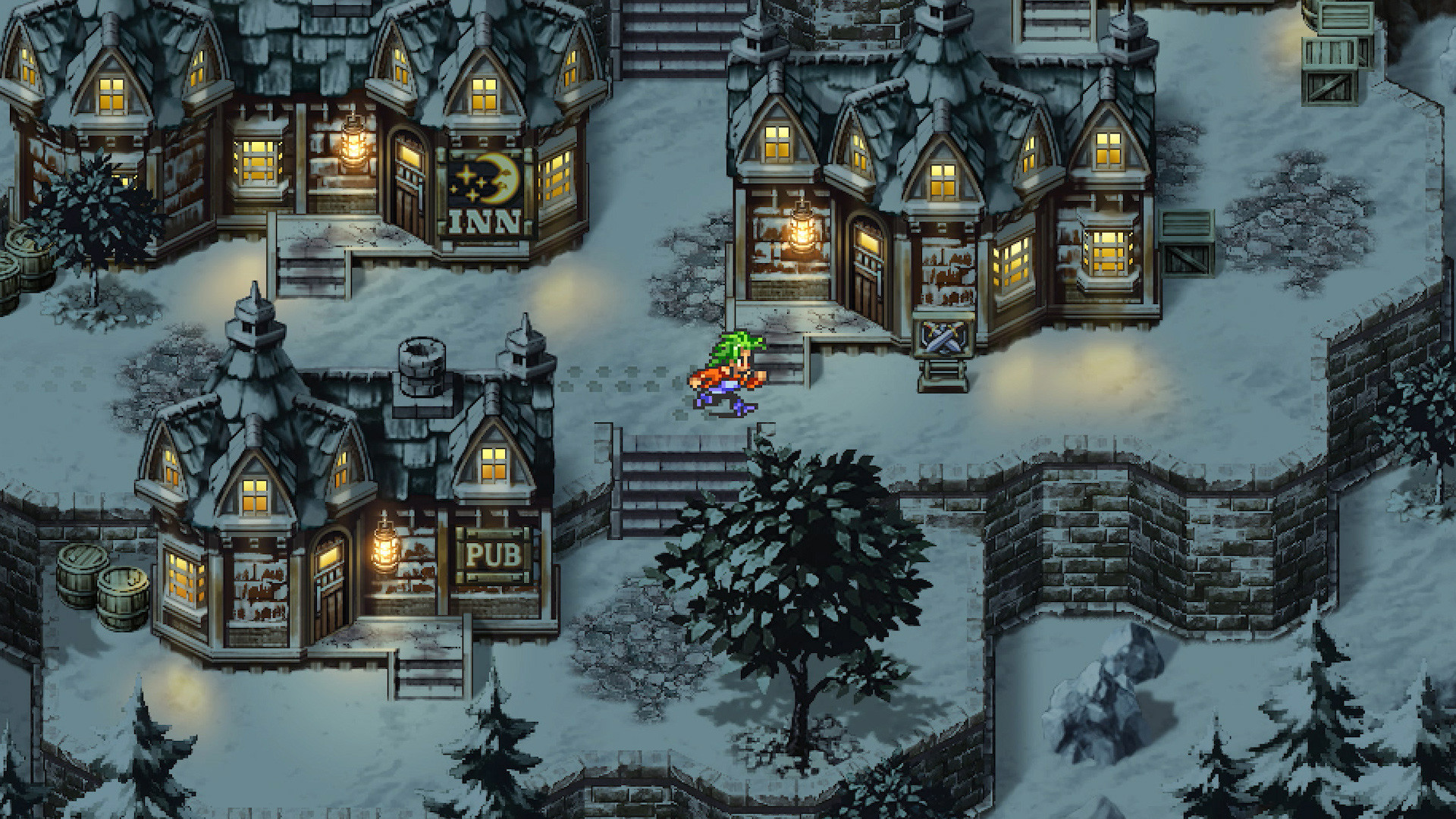
The character is in standard 16-bit resolution; the barrels and trees are 32-bit; the houses and walls are 32-bit, but with some sort of smoothing filter applied; the business signs seems to be computer art that's been fed through a light pixellation filter; the illumination of the lanterns is the result of some sort of non-pixelated lighting effect; and the windows seem to be a flat CG underlay. It does have care put into it - and, significantly, many of its flaws are masked on a tiny, high-res mobile screen - but it's also wrong in a fundamental, very obvious way that demonstrates profound not getting it.
Square's most recent effort (the ActRaiser thing) is a bit more successful - but would I really want any game for which I significantly cared subjected to that treatment, even if it means new content and a wider audience? Even after mulling it over, I still can't say.
I was browsing Akari Funato's Twitter account, and I ran across a promotion of a re-release of Vheen Hikuusen on the DMM digital platform. It seems a straight export of the Birz reprint that accompanied Harmony of Silver Star's release. The art's as crisp as day and as beautiful as you'll ever see it, and the DMM reader has a much better zoom-and-enhance functionality than Amazon Japan's in-browser Kindle app - I'm seriously tempted to get it just in case I need to snip any panels. The thing is, while DMM does have its tentacles into selling all sorts of media, it's by far most renowned as a clearinghouse for every kind of Japanese porn video humanity could want. I dunno, man - I'm not an artist, and Funato's gotta do what she's gotta do, but for selling her stuff privately, God bless her, she seems to have a knack for teaming up with the most questionable companies.
Anyhow, the real reason I'm posting: I checked out the comments to see if there were any hot author convos about my most favorite game-related thing ever - and there was a hot author convo, but not about Hikuusen specifically. Someone mentioned adoring Vheen Hikuseen but never having played Lunar, and Funato let slip that she hadn't gotten the chance to play the PSP version of Silver Star yet - even though she drew the portraits for the game:

Oh, man. I always thought that Ghaleon (in his Premier outfit) looked like a cocker spaniel in Harmony, and I took the off-model art as proof that Kubooka just couldn't do his old style well enough to draw Lunar anymore. It wasn't Kubooka. It was Funato. I can't wholly blame her, as, despite drawing key frames for Mia's intro in SSS, cel stuff was never her milieu. I tried going back to Ghaleon's PSP portraits to try to find some Funato touches I missed earlier while ignorant of her involvement, but (save for him showing a little mazoku fang in that Four Heroes portrait where he's gritting his teeth) no, no - he just looks bad.
(ETA on this a month later: I took another look at the portraits, and I see that a lot of the offness comes from Funato heavily outlining the tops and sides of Ghaleon's eyes - to make him look more evil, I suppose. The most natural Ghaleon looks is in his collapsed portrait in his final boss outfit, which completely lacks those heavy lines. As Funato's intuition usually isn't off when it comes to Ghaleon, I wonder if the lines were a studio-mandated revision to make Ghaleon appear more overtly villainous.)
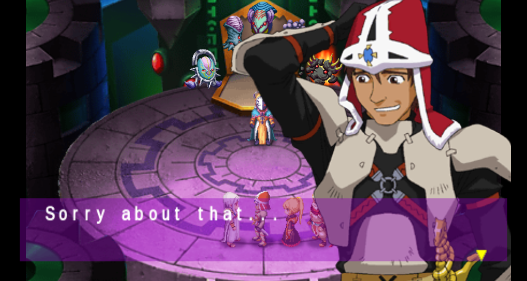
At least we know how they managed to get Dyne's nose right in the game.
I also found the Skeb Ghaleon pic without the "SAMPLE" watermark, though with a different watermark, in a less-obnoxious location but now opaque, appended:
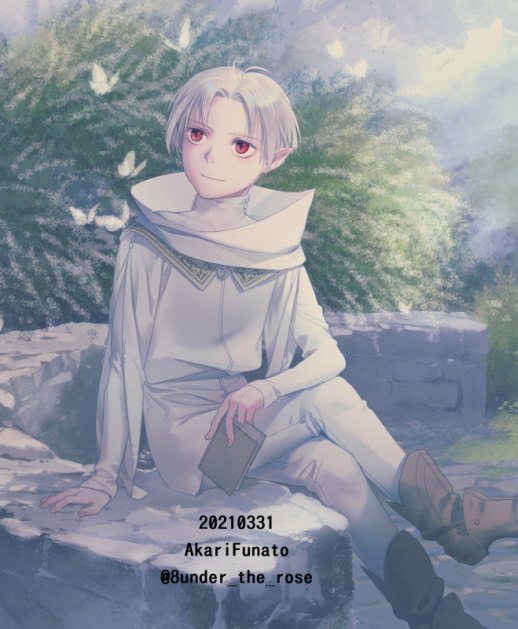
Smaller res, though, even if you do the small -> orig trick on Twitter.
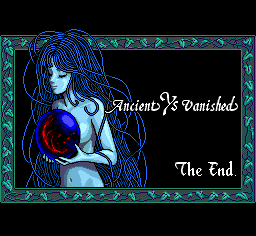
One of the other things I did in the breaks during my very busy Q4 (yes, about nine months ago) is finish up Book II of Ys. My major takeaway: It is amazing how Lunar stole absolutely everything from Ys - Alex, Luna and Lucia, Vane, Ghaleon, Zophar, pictoglyphic friezes, blue-tinged goddess real estate, entire cutscene sequences and shot compositions - and at the same time stole nothing at all, because Ys does absolutely zero with its material. Hey! These are good ideas! Why don't we tell a story with them?! Because Ys sure didn't.
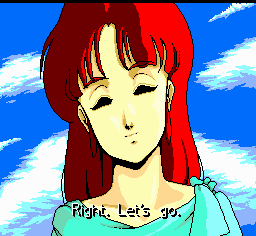
I've gone over the gameplay failures after Ys I, and that assessment stands. The sequel does add a fireball spell, which makes boss fights play like My First Shooter instead of its predecessor's nonsensical non-affairs, and the puzzles are a bit smarter and more involved this time around, making varied use of a spell that transforms you into an enemy creature. Any hope for a satisfying resolution to the story set up in Ys I takes a big dive here, though, so it's the narrative missteps that have my attention. Ys II is remarkable in its ignorance of how to use the various elements of its medium - both that of the video game and the new CD-based platform on which it was published - to tell a story.
Page 33 of 56
